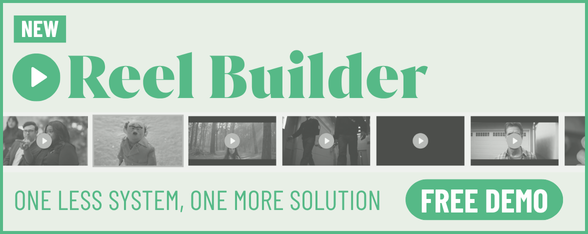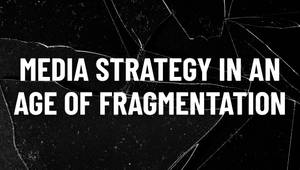
SmartAssets: The Missing Piece of the Adtech Puzzle?

“Consumers are fed up,” explains Lindsay Hong, CEO and co-founder of SmartAssets, an ad tech platform that uses AI to transform the way brands manage their creative content.
Lindsay is referring specifically to the overwhelming amount of content that’s constantly pushed onto media channels and, sometimes, without consideration for its quality and relevancy. The “proliferation of new media channels has exponentially driven brands’ needs to deliver increasing amounts of content,” a demand that necessarily presented a suite of challenges at the same time.
Brands are facing multiple channels, all requiring different types and formats of content. “Brands want to be ubiquitous,” she says. Historically, brands may have needed to produce 50 assets for a campaign, but now the number can reach 1000 with ease. Automation helps with speed but “brands don’t have ten times the original budget to get the additional content”. This is coupled with an understanding that volume cannot come at the expense of quality. “There’s a need to be effective on all the different channels, to keep them populated, keep consumers engaged, and have all that content feel like a part of the overall brand strategy that addresses campaign objectives.”
A granular understanding of data
SmartAssets’ services can be divided into three focus areas: creative tagging, analytics, and optimisation. The trifecta produces a cumulatively positive outcome.
“You have to start by tagging your creative content, which is done with computer vision. This allows you to have a much deeper, granular understanding of what's in your assets before the analysis starts looking at commonalities across those and extracts actionable insights. For example, 30% of a client’s asset library could also be used in this other ad format,” comments Lindsay. “Once you've gathered all that performance data, you can start to look at how KPIs are being driven, and then how the optimisation is effecting that insight.”
SmartAssets isn’t the only type of creative testing out there, but it is one-of-a-kind. Dynamic creative optimisation (DCO) is widely used throughout the media world. It allows you to put a number of assets up for the machine to learn which one performs best and then continue serving it. The issue, or the drawback, is that a series of “beta assets” first have to be created and then media has to be spent testing them on digital channels. SmartAssets bypasses the process of feeding AI models with available historical data to predict performance before any media budget has been spent. “There are a lot of savings there” that optimise asset creation, media spend, and asset-to-platform suitability, notes Lindsay.
It’s an entirely new approach to utilising existing data to generate insights and assets. “We half-seriously contemplated calling the platform ‘Hug’ because we really wanted to bring creative and media together into this big bear hug,” jests Lindsay. But, even without ‘hug’ in the name, that’s exactly what SmartAssets is doing by helping CMOs objectively understand the impact of creative choices on in campaign performance.
Fingers get pointed in a lot of different directions across creative and media if things don’t go to plan, when everyone should be unified. Lindsay sees two reasons for that tension. “The first is a lack of an integrated workflow caused by siloed teams. The second is a lack of common understanding around what ‘good’ looks like from a shared dataset between two parties, resulting in a very subjective opinion since previously there was nothing tying the two sides together.”
SmartAssets is changing that by creating a new creative dataset “that could not be achieved manually because it’s far too detailed and would be prone to too much error and inconsistency.” The software breaks every campaign down into its granular components: colours, emotions, call to action, logo duration, the voiceover etc. Basically, anything that’s in the asset and could be relevant to the campaign’s performance is captured, creating a huge and brand new metadata set. “You can then start to cross-reference like you’ve never done before, bringing creative and media data together,” explains Lindsay.
“You’re no longer looking at how asset A performed over asset B. You’re looking at what is it about one asset specifically that did better than another. With SmartAssets, we can do it with enough historical data to mean that the conclusions are not conjecture, they’re statistically significant, which hasn’t been done before. So, it's bringing these two sides of the marketing value chain into a single understanding and enabling it with a workflow that also works for all parties.”
Insights for optimisation
What does that look like in practice? The SmartAssets model that picks up emotion, for example, is trained on millions of images. It has the ability to determine the sentiment of any given asset, which means that conclusions can be drawn like ‘every time your ad features an asset that’s tagged as ‘exciting’, the clickthrough rate increases by 20%’. This is used in conjunction with campaign objectives and the recommendations correlate directly with them. If the KPI is ‘add to bag’, Lindsay says SmartAssets can “look at past data to determine the most important features in an asset that correlate with high ‘add to bag’ rates.”
Crucially, there’s no assumption of what that might be, “we let the model tell us.” Of the hundreds of features that the model picks up, it will highlight the few that make an incremental impact on the KPI which then forms the foundation of the insights and recommendations made.
A recent test on a paid media asset identified that too many product images negatively impacted the asset’s performance. “As soon as it went up to five products, the performance dropped off a cliff,” says Lindsay. “We drew a conclusion that up to five products were fine to have but, really, the sweet spot was three.”
Another test predicted an uplift of 28% on the campaign KPI, but the results also returned a 12% increase in ROAS, which more than pleasantly surprised everyone. That’s not the end. SmartAssets can also ensure that all the assets adhere to whatever parameters are set, like brand guidelines or a platform’s specific dimensions. It allows for ever more control of all assets “just by using image recognition and applying the rules before we even go into integrating with the media as well.”
So far, so technological - but that’s not the full story. As clever as SmartAssets currently is (and it will keep getting better), it still necessitates the human’s marketers’ involvement.
“There’s absolutely an important human role in all this,” Lindsay states. “AI is not going to be a tastemaker, for the foreseeable future at least. There’s so much knowledge on the brand and human sides that are not in the model.” The AI model will make recommendations, but it’s for the marketers to keep a holistic vision of the brand and the business in mind, and apply those insights to serve the bigger picture. “We need to continue valuing the human knowledge of the brand and business that’s been acquired over a long time and a lot of experience,” she adds.
The “zenith of the smart asset”, according to Lindsay, is an asset that “knows to create itself.” She says that we’re “a little way off that” but there is a time in the near future when a marketer briefs the model on a campaign they need and requests the assets within predetermined campaign objectives. The campaign is then created from the library of data and pushed on to the right platforms within the brand’s guidelines. Lindsay is confident, however, that this time will come quickly and “free up people to be thinking more about their brand values, what purpose the brand has, and what really engages consumers. So much content on the internet is terrible and people are getting so frustrated, bored, and overwhelmed by it.”
A revolution of scaled content production
For Lindsay, a tech and AI-optimist, this period is the beginning of a “revolution in scaled content production.” She continues, “a lot of people have already gone at it from a traditional tech perspective, and there are some great tools out there for automated versioning that you can integrate with your media platform, but generative AI doesn’t work like that. We’ve seen what it can create - the sky seems to be the limit. This means if you are prompting accurately enough, you don't need to be limited by templates anymore. It doesn't need to be a structured solution.”
There are worries that this newfound freedom to create at scale, seemingly without limit, is going to negatively impact the quality of what makes it in front of consumers’ eyes. Lindsay disagrees. “I actually think that the quality of content is going to go up as a result of AI and not go down. People are worried about spammy content, but AI is able to bring in so many more insights to the creative process that it will be much easier to create a really great asset.”
As for the brands who may be tempted to use gen-AI to create masses of content and just stick it on their channels to ensure omnipresence, Lindsay has a warning of what’s at risk. “It's a false endeavour, because all that will do is create a cognitive load that people don't want, and it’ll damage the brand.”
If you’d like to check out how creative effectiveness works in real-time, contact the SmartAssets team for a product demo.












